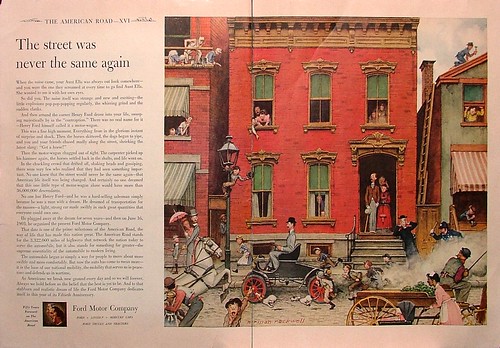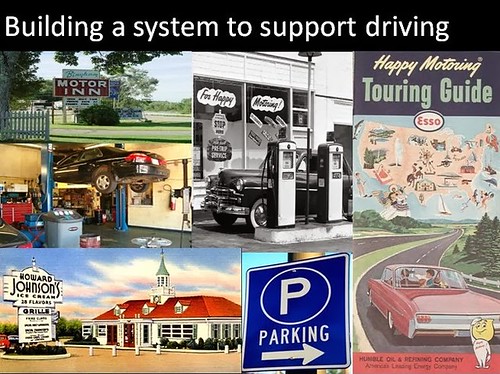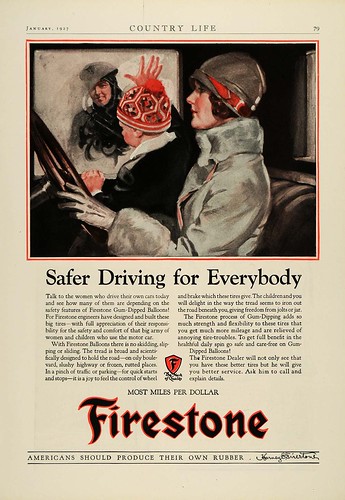Ford Motor Company 1953 Documentary on the history of the automobile
1953 was the 50th anniversary of the start of the Ford Motor Company (which was the third try by Henry Ford as the first company dissolved, and he lost control of the second attempt, which became Cadillac).
They had a big promotional campaign with many dimensions, including advertising.
I am fond of this particular double page ad, which I came across about 10 or 11 years ago when I was doing image research.

They also did a documentary, focused on the value of cars especially for outside of the city, but within the city as well. I didn't know about it, but over the weekend one of the CSPAN channels ran it. Interesting, the title of the ad "The street was never the same again," was also a line used in the documentary.
The film mentions some of the points I make in my presentation about elements of the system that supports automobility such as maps, signs, and service stations and repair garages, and that it took a long time to build that system, and it will take a long time too, not necessary that long, to build a system equally robust in support of sustainable mobility.

But I realize that this slide needs to be accompanied by two more, one on the road system, although I talk about it during the presentation, and one about the many improvements in the technology of the car.
With regard to the latter, not unlike bicycles, when they were originally introduced, cyclists needed a fair amount of technical and physical prowess to be able to use them, the same was true with cars, especially before the electric starter. But as the car's technology improved, more people were able to use them successfully, including, eventually, women.

Firestone ad, 1927
There were many ways in which the automobile and oil industries systematically constructed the system necessary to support the adoption of a transportation paradigm centered upon the motor vehicle.
Labels: car culture and automobility, change-innovation-transformation, sustainable mobility platform, urban design/placemaking


0 Comments:
Post a Comment
<< Home